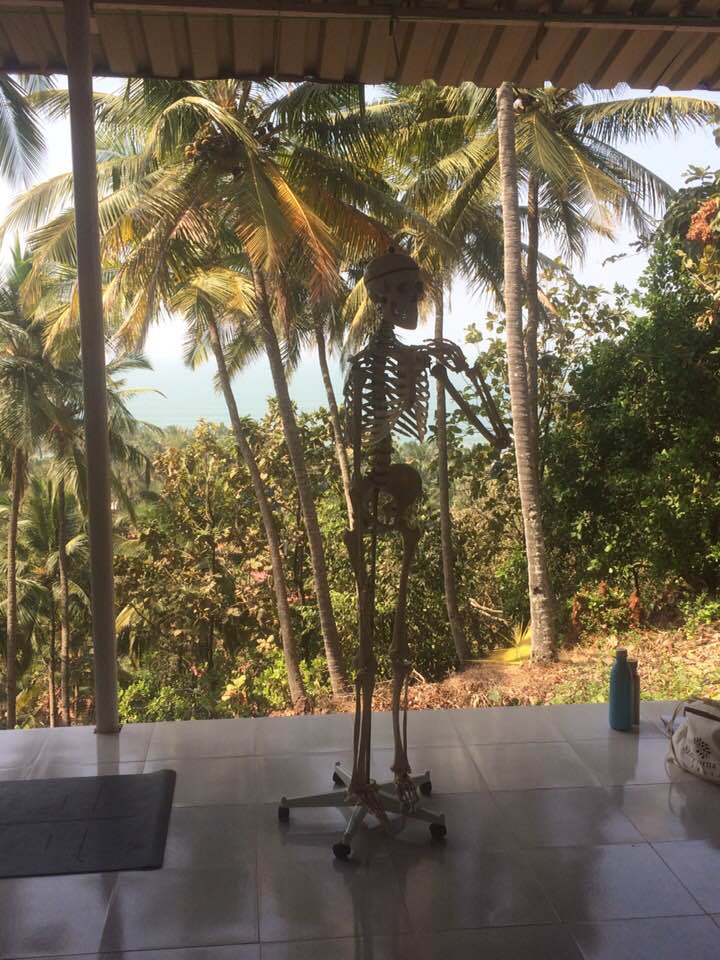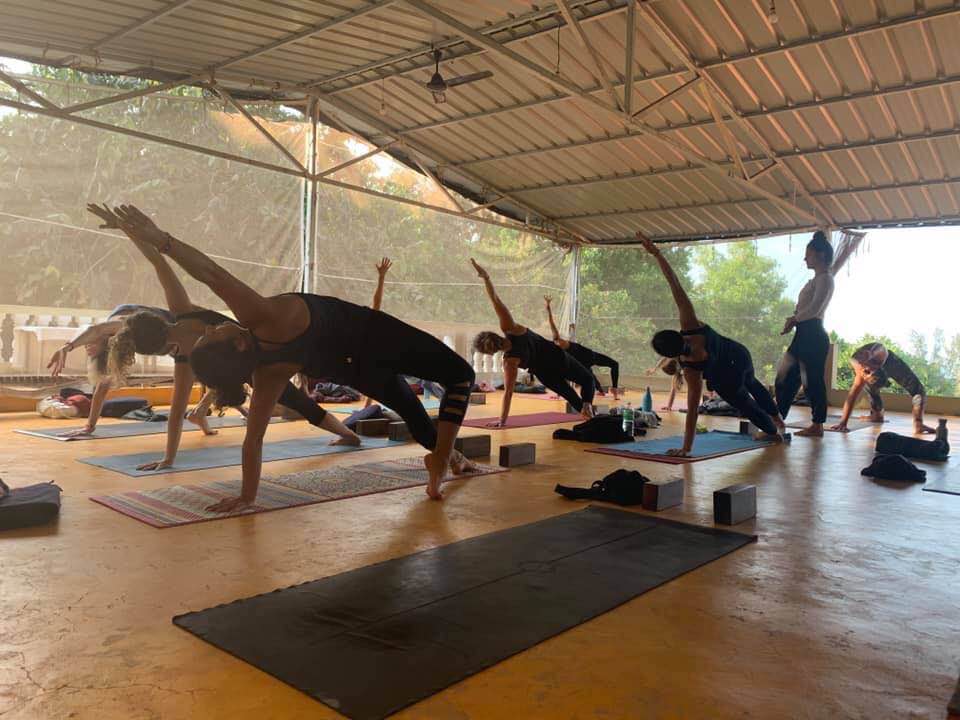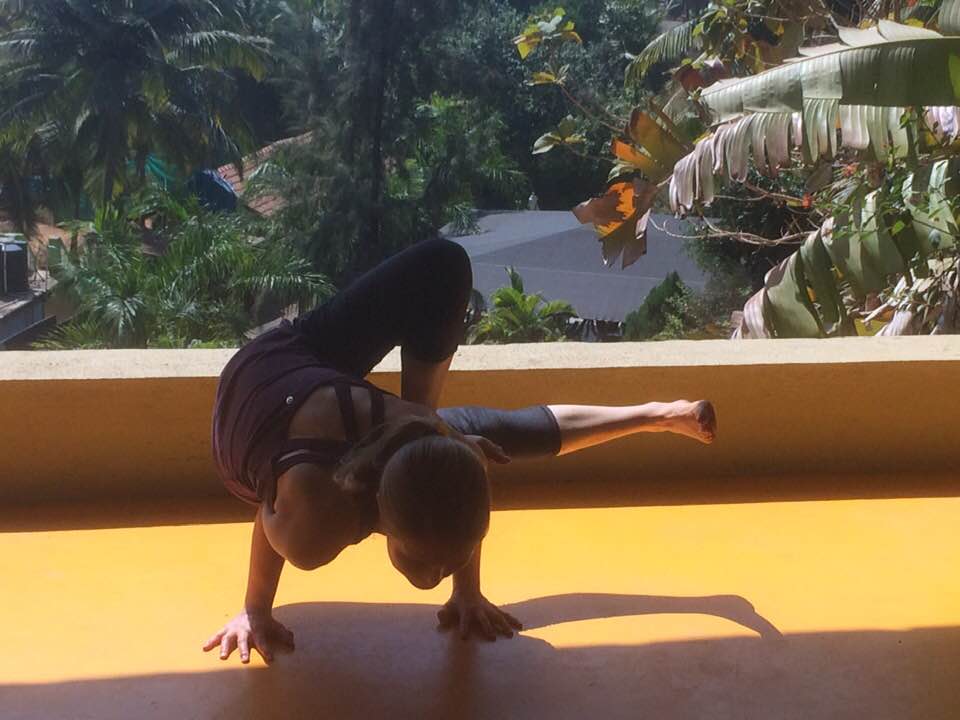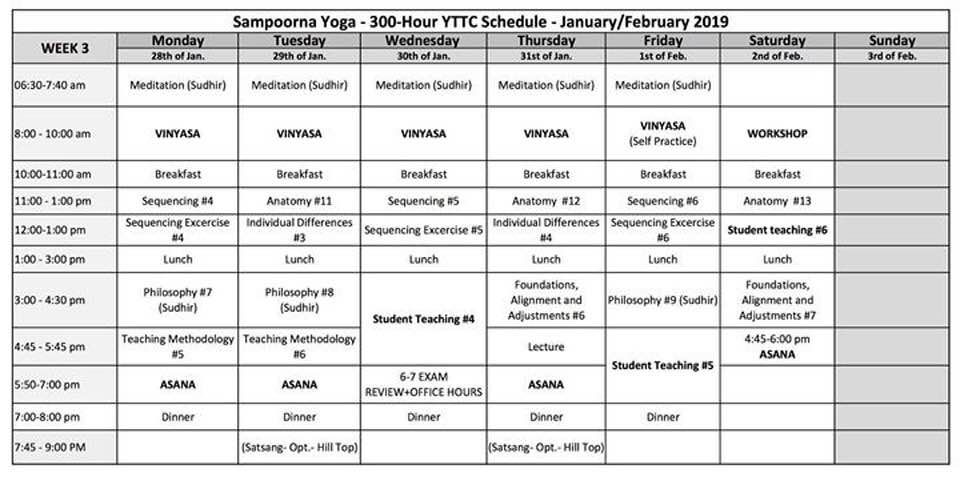300 Hour Yoga Teacher Training Week 3
This is a write up of my experience in week 3 of the 300 hour yoga teacher training with Sampoorna Yoga in Goa India. If you haven’t already you might want to take a look the first blogs in this series. This article follows on from the previous articles which were a write up of my experience in weeks 1 and 2. There are also earlier articles in the series that looked at considerations and advice I would give before committing to a yoga teacher training and my preparation before the course.

Theory classes:
Anatomy, Philosophy, Sequencing, Teaching methodology, individual differences and alignment & adjustment classes continued in week 3. More detail on these classes is covered in the blog on week 1 and week 2 of the course. At the end of week 2 I was wondering how I would be able to fit any more knowledge into my head but somehow, I managed it!

The course was very well structured and organised. The teachers had taught the content to groups before so they were aware of what needed to be covered and there was a good balance of getting through the content as well as allowing time for further discussions or clarifications on certain areas.
I absolutely love learning and when it is something that I am so interested in, I was continuously engaged. I think anyone who has chosen to do the course would be the same.

Practical Teaching Exercises
I had got much more used to the teaching exercises by week 3 so didn’t feel as nervous about these as I had in previous weeks
1. Student Teaching #4: Teaching a class with a strong theme
The objective was to teach a class with a common theme, maybe like a workshop style. For example, this could be an emotional, physical, philosophical theme, yoga concept or something that you might learn in a workshop style class. The theme of the class needed to be clear and flow through the whole 20 minutes that you were teaching.
I had never taught a workshop before and decided to cover the sun salutation in a workshop style class. This covered the individual asanas within different sun salutations, the breathing and transitions and it allowed the students to practice and learn them. I think sun salutations are great to practice as part of self-practice so I thought this would be useful theme to cover in a workshop style class. There was a wide variety of themes chosen by the other students and it was enjoyable taking classes all the different classes.
2. Student Teaching #5: Teaching a Private student
You paired up with another 300-hour student on the course a few days before the assessment to prepare a 45-minute private class to each other. Ideally this was someone you hadn’t worked too much with one the course. You had an initial assessment with the student to understand any injuries or issues in any areas of the body. Like a meeting a private client for the first time you chatted and understood what the student wanted from the private class. Using this information, you were then able to go away and plan a class for the student that would meet the needs of what they wanted from the class and what would be good for them.
I thought this was a good exercise. I had taught some private classes before but had never studied any best practice for working with new clients and doing the initial assessment with them. This is so important when working with an individual because they are really needing good quality service and a class well suited to their individual needs. Many people in the group had never taught private classes before so this would have been useful for them as well as it is very different to teaching group classes.
3. Student Teaching #6: Teaching something you are not familiar teaching or teaching an Asana you cannot do yourself
I personally never teach anything I cannot do myself and before completing the course I thought this would have been a big No! As well as learning that you don’t have to demonstrate everything you teach, it was interesting to understand that you can verbally cue and explain something without being able to or show it yourself. For this exercise you could teach a pose that you were not able to do yourself. Another option was teaching an area of yoga that you do not usually teach such as pranayama. It is common for many teachers to only teach asana.
This was a very short 15-minute exercise to another student. I decided to teach a handstand. I had come to the course with it being a personal fear, so it seemed quite fitting and quite satisfying to be teaching this by the end of the course (even if I was still trying to get some air time in the pose myself!). I also threw in an Om chant at the beginning of my short class just because I had never actually dared do an Om with a class in the UK! Maybe something I might have the confidence to do on my return!
My personal experience of week 3
I remember at the end of week 2 feeling exhausted but somehow, I seemed to get some energy back in week 3. I was feeling stronger physically in my practice and feeling more confident with the course material and my teaching. This was a positive week for me.
Looking towards week 4, I wasn’t looking forward to the final exams or the teaching assessments so part of me was wishing them to be over but at the same time realising there was only one week left was making me feel sad that things were coming to an end.

Further reading:
This blog post explored week 2 of the training course you might want to look at further blogs in the series where I have written up my experience throughout the remainder of the course:
1. Considerations before taking a yoga teacher training
2. 300 Hour Yoga Teacher Training – Before the course
3. 300 Hour Yoga Teacher Training – Week 1
4. 300 Hour Yoga Teacher Training – Week 2
5. 300 Hour Yoga Teacher Training – Week 3(Current article)
6. 300 Hour Yoga Teacher Training – Week 4
7. 300 Hour Yoga Teacher Training – Final Thoughts
8. Agonda, Goa, India
Sarah Williams is a Qualified Yoga Teacher based in London with an online presence @sarahlucyyoga on Instagram and Facebook. She also blogs about yoga and health & wellbeing topics on her website. Sarah’s focus is Vinyasa Flow, Hatha and Ashtanga styles of yoga and she completed part of her yoga teacher training in India.
As well as being a yoga teacher Sarah is also a Chartered Accountant. She fell in love with yoga as it was a release from the office, it taught her to value her health and improved the attitude she had towards life and herself. As a teacher she is able to pass on the benefits of yoga to her students and finds the job incredibly rewarding.
She has completed her 300 hr advanced teacher training from Sampoorna Yoga Goa in January-February 2019. If interested in Yoga Teacher Training please browse our Teacher Training page
YOGA ALLIANCE REGISTERED YOGA TEACHER TRAINING COURSES

Sampoorna Yoga Teacher Training School has been a registered international yoga school with Yoga Alliance, holding RYS-200, RYS-300, RYS-500, and YACEP designations since 2009. Its online and in-person Yoga Teacher Training Courses and Certifications are recognized and accepted worldwide, enabling all graduates to teach globally. Upon course completion, participants receive a 200-Hour, 300-Hour, or 50-Hour Yoga Teacher Training Certification, allowing registration as RYTs (Registered Yoga Teachers) with Yoga Alliance. Our Yoga Teacher Training Certificate Courses empower you to teach legally in any country, whether you choose to register with Yoga Alliance registration or not.


